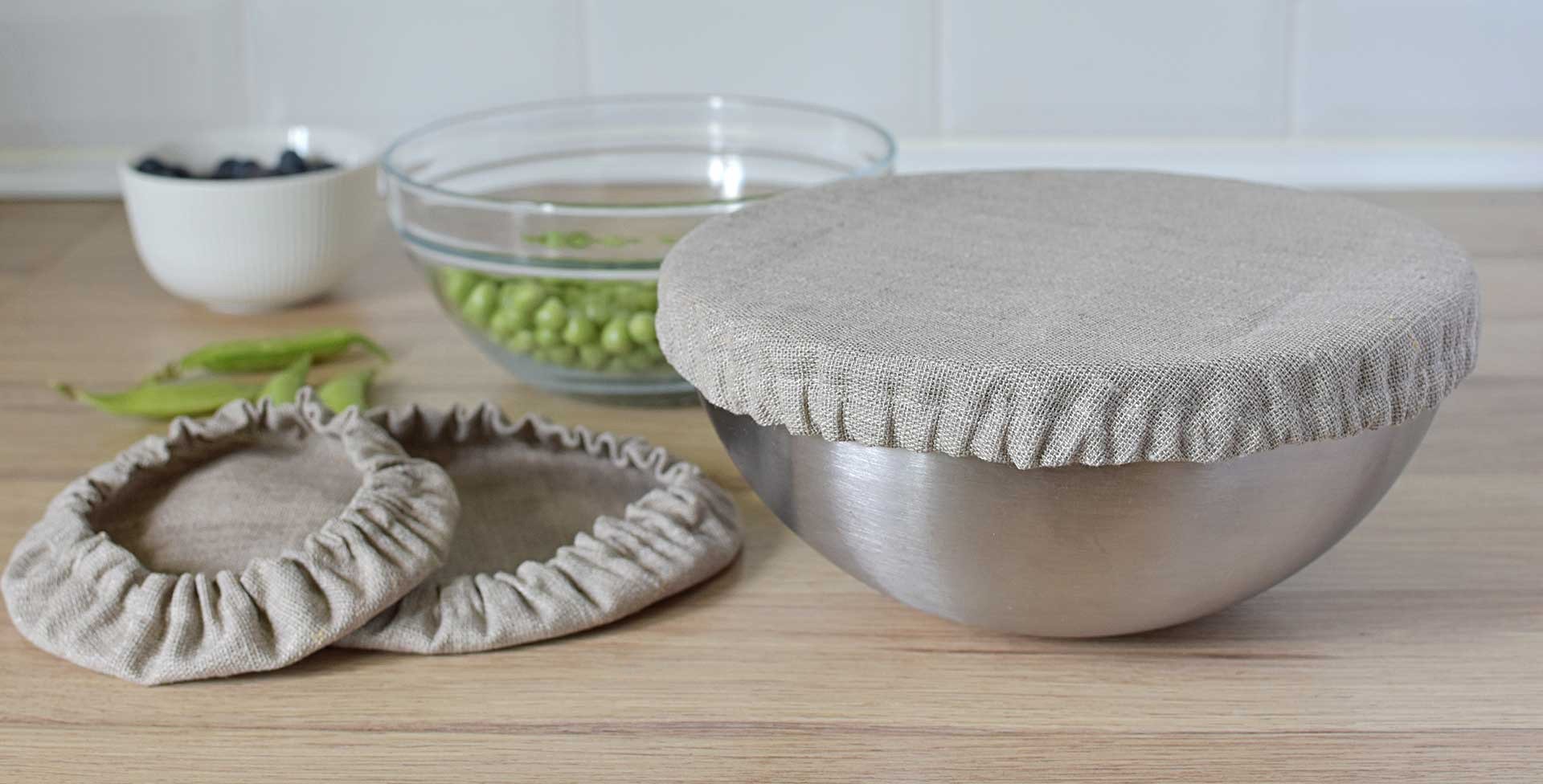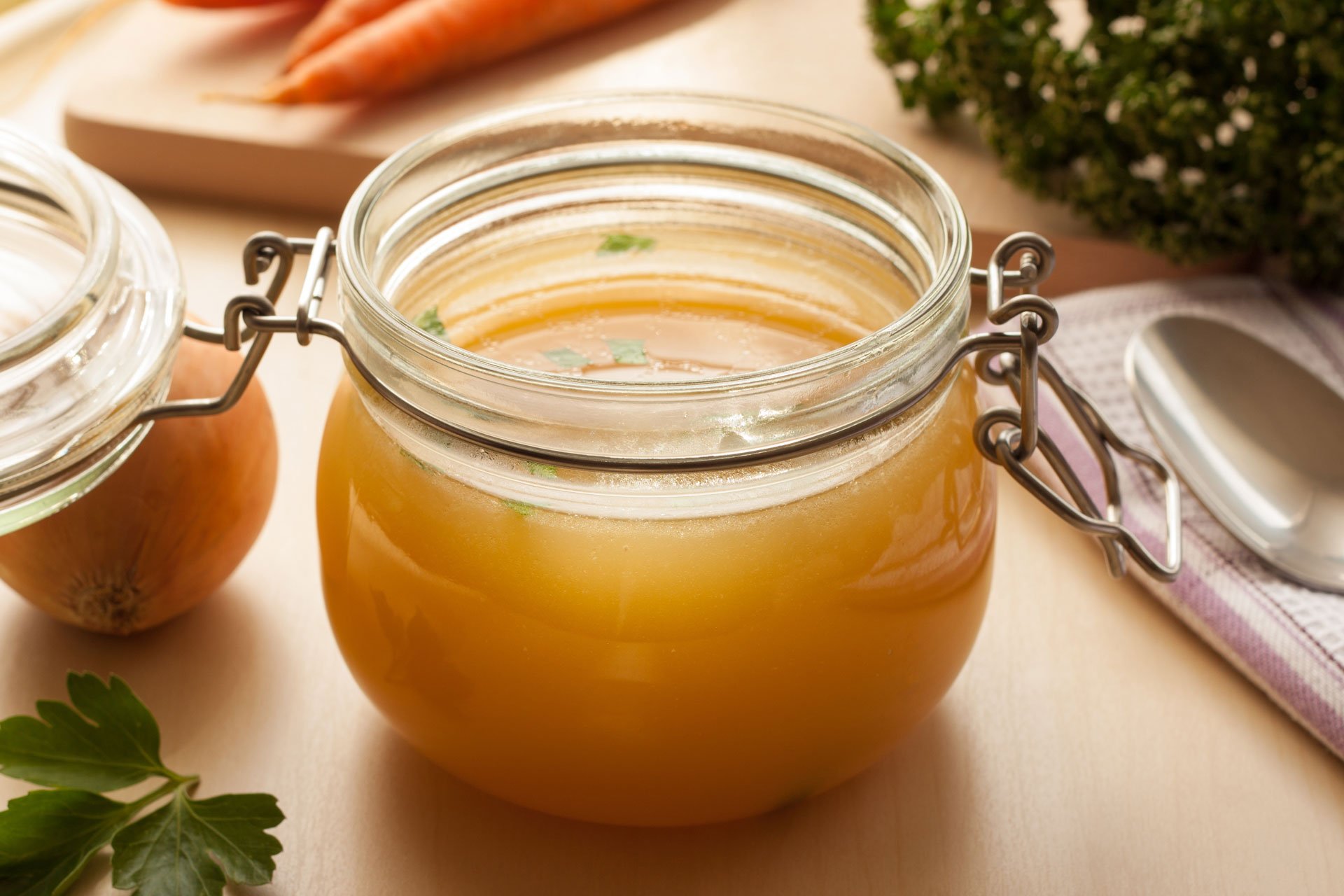How to Make Reusable Produce Bags, Bowl Covers and Snack Bags
In what sometimes feels like an epic quest to reduce plastic usage in the kitchen, I’ve identified three areas where you can start to win the battle: DIY produce bags, bowl covers and snack bags. They’re simple changes and the amount of plastic you’ll eliminate will add up in the long run, which will be a savings for you and a huge help to shrinking our landfills and cleaning up our oceans.
DIY Produce Bags
Produce bags are things we don’t typically think of until we’re faced with a gravity-defying display of fresh peaches while grocery shopping and realize we don’t have the same grabbing powers as an octopus. So that you’re not caught off-guard at the store next time, think about stashing some extra ones inside your reuseable grocery bags; it’s the beginnings of a good new habit. As for what type of produce bags you go with, there’s a world of alternative choices.
Sewing Your Own
There are many options out there for sewing your own produce bags (also crocheted, knitted and knotted, oh my!) and many of these how-to’s repurpose existing household fabrics, like dishtowels, sheets or old t-shirts (psst, jersey doesn’t fray when cut!) so you can likely find all the supplies you need by looking around your home (eg: old pillowcases or net curtains and shoelaces as drawstrings). Remember that much of your produce will get weighed before purchase, so be mindful about using light-weight materials or even waiting to bag your apples until after they’ve hit the scale.
Buying Repurposed Reusable Produce Bags
If you’re not the sewing type, consider supporting independent makers on places like Etsy; sometimes it’s hard to discern who is truly an independent retailer and who is a large commercial company pretending to look indie, but if you dig around enough you can locate handmade produce bags and support mom-n-pop operations at the same time. Looking for brick and mortar sellers or online sellers that are closer to home will also reduce the packaging and shipping footprint of your purchase.
The amount of plastic you’ll eliminate will add up in the long run, which will be a savings for you and a huge help to shrinking our landfills and cleaning up our oceans.
Use Something You Already Have as a Produce Bag
If you want to keep things easy-peasy, you can always tie a square scarf or bandana into a produce bag with just a few knots (if you don’t own any, you can almost always find a fun selection at secondhand stores). Other already-existing-resources include the plastic bag from your bulk potato purchase, for example. Consider wiping the dirt from the inside and taking that bag right back out with you the next time you shop for produce, giving it added life before the landfill.
Just Say No and Use Your Hands
Lastly, you could always just not use a produce bag at all, grabbing everything with your bare paws and just letting your fruit and veggies roam free — or as I’m now about to coin it, “free-roll”— from the cart to the cashier’s scale and then straight into your reusable grocery bags.
DIY Bowl Covers
There are many options for creating your own bowl covers instead of relying on cling wrap. If you’re good at sewing, or know someone who is (you should always know someone who can do what you can’t), you can have lots of fun following any number of bowl cover sewing patterns out there like these.
Use a Piece of Fabric as a Bowl Cover
Don’t feel you need to go out and buy new fabric either; look around your house and you might find a spare tea towel or pillowcase; a quilted placemat makes for a great insulated version and even a vintage handkerchief can get new life as a festive party bowl cover.
If you’re not as into sewing, you can scale back easily to a barebones DIY approach by simply draping a tea towel or handkerchief over a bowl and secure it in place using a large rubber band or even one of those brightly-colored elastic headbands.
Use Plastic You Already Have
If you’re really concerned about your bowled food being air-tight, take the outer bread bag from a recently-finished loaf of bread, cut it open along one side seam and across the bottom so it opens into a flat sheet of plastic and use that to over your bowl; it was unfortunately headed into the trash anyway, so give it a few more chances to serve some purpose since you already have it.
DIY Reusable Snack Bags
Similarly, you can find a lot of DIY sewing alternatives for plastic snack and sandwich bags. Rolling down a small fabric (or even brown paper or wax paper) sack and securing it shut with a couple of binder clips can be your best friend, if sewing velcro or drawstring pouches ain’t your bag (oh yes, you saw what I did there).
DIY Beeswax Wrappers
I’ll be the first one to say I don’t have enough time in the day, but you can even make your own beeswax sandwich wrappers from scratch if you want to get all crazy. If you prefer to slow your roll, old-school bandanas and an appreciation for the art of furoshiki can yield you good snack packages too, while honing your knot-appreciation skills. If you are concerned about longer-term freshness of your sandwiches and snacks (I dunno, personally, I just eat faster), you can find laminated cotton fabrics that are PVC free, BPA free, lead and phthalate free out on the market.
Reuse, Reuse, Reuse
Or, if you were like me growing up, all my sandwiches were neatly folded up in crisp wax paper and I’d bring that paper home each day for reuse until the relentless onslaught of my sandwich’s tomatoes finally made the wax paper shout for mercy by week’s end; that not only gives good mileage to your reusing efforts, but if you have kids, it also teaches them about the responsibility and importance of using and reusing what you have.
Get the latest food news, from FoodPrint.
More Reading
The FoodPrint guide to beans: Everything you need to know to buy, cook, eat and enjoy them
November 18, 2025
Your guide to buying and preparing a heritage turkey or pastured turkey this Thanksgiving
November 18, 2025
How Miyoko Schinner upped the game for vegan dairy
November 7, 2025
30+ things to do with a can of beans
November 4, 2025
In a beefy moment, beans?
November 4, 2025
Waste not, want not with “Ferment,” a new cookbook by Kenji Morimoto
October 1, 2025
For these cocoa farmers, sustainability and the price of beans are linked
September 17, 2025
You haven’t had wasabi until you’ve had it fresh — and local
September 11, 2025
How to make your kids’ school lunch more eco-friendly
August 19, 2025
No-cook meals: 40+ ways to enjoy peak summer produce without turning on your stove
August 12, 2025


